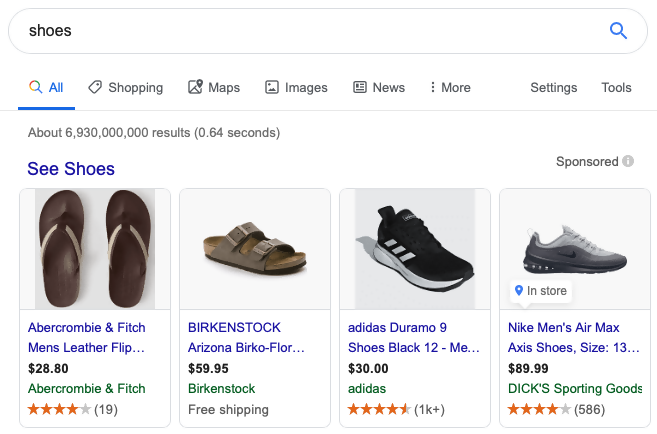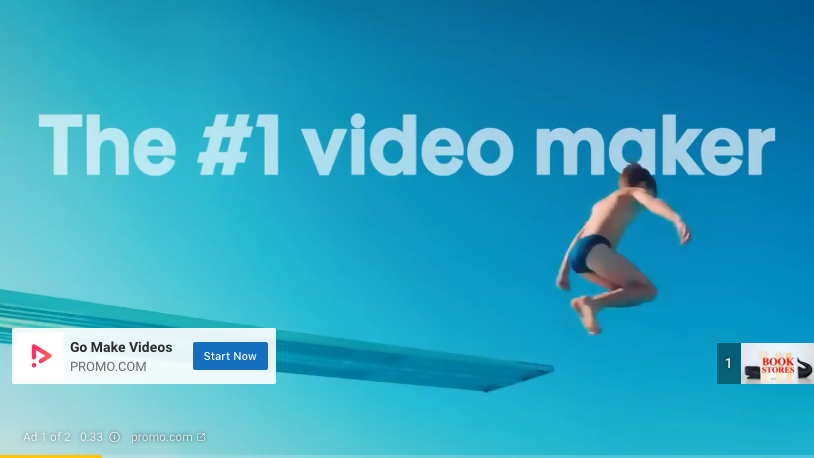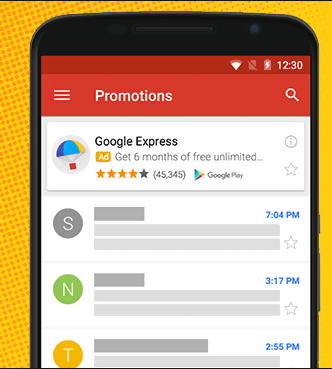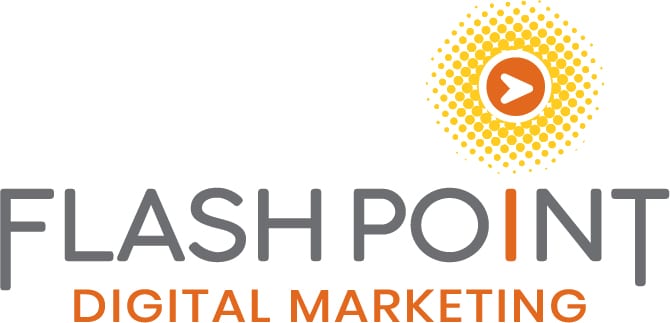SEO Guides, Tips & More!
Learn from Our Experience
The Five Types of Google Ads
In 2019, there are few things more ubiquitous for advertisers and brands than Google advertising. Ever since this tech behemoth became the go-to source for searches, information, and business decisions, advertisers and organizations have been leveraging their impressive global reach in order to access the exact audiences they most want to target. After all, Google ads are cost-effective, highly customizable, and uniquely targeted to appear when users are searching for an exact target or service (or sometimes the product or service of a competitor.)
But Google’s ad creation process isn’t one-size-fits-all. As their network and reach has expanded, so has the complexity of services they offer for advertisers of all kinds. In fact, there are five major different types of Google ad campaigns that can be created and run, each serving a different purpose and accomplishing a different goal.
So how can a company know which type of ad campaign is going to suit their goals? And how to understand exactly how each type of ad works— from search network campaigns, display network campaigns, and shopping campaigns to video and app-based campaigns?
We’ve developed this guide to demystify the process. We’ll help identify the specific goals for a campaign, then help choose the right ad style for those goals to get major returns for the ad spend investments. We’ll also identify which type of ads are more effective with smaller or larger budgets than others.
Identify PPC Goals
In the early stages of launching an ad campaign, the very first thing to do is nail down exactly what the goals of the campaign are. It’s surprising just how many brands and advertisers begin structuring a campaign without a clear goal or end results in mind.
Not only is establishing goals important when it comes to the copy and calls to action of ads, plus where those ads lead when users click on them, but they’ll also determine exactly the type of advertising campaign to run.
With that in mind, these are the 6 main goals of advertising campaigns that Google services. It is best to identify 1-2 that match the company’s current position and hopes for the campaign.
Sales
While this might seem like it would be the goal of any ad campaign, that’s not always the case. While every company obviously hopes to make sales, there are many different ways to work toward that goal—and many things that need to happen first.
But if a company is in a position where the primary goal is to make sales today, a Google ad campaign is a powerful way to do that. Sales ads are different than lead-generation or traffic-generation ads, as they use more powerful and targeted sales language designed to inspire a specific action. They need to do a lot of heavy lifting as they pull users towards a landing page, priming them to be in a mindset to make a purchase or place an order.
In the next section, we’ll talk about which Google ad types are best suited to making sales for a company.
Leads
Some companies may be looking to create an ad that will help launch the beginning of their sales funnel by collecting leads. These leads may then be asked to sign up for an email mailing list, receive a phone call from a sales representative, attend an event hosted by a company, or take other action that will add them to a company’s network of potential sales opportunities.
Lead generation ads may not use as powerful sales language as sales-specific ads since they’re often written to make users feel that they’re not making a strong commitment simply by clicking on the link or entering their email address. Lead generation ads can be powerfully effective, but they need to be targeted correctly and require the right type of Google ad style to make their mark and reach the most high-value leads.
Website Traffic
Many companies, particularly those that are early in their journey, are simply looking to bring more attention to their product, service, and brand. These companies are best served by ads that will simply drive traffic to their websites, where users can discover what they’re all about and learn about what they have to offer.
Ads designed to generate web traffic should be intriguing, interesting, and placed in a way that they find users when they’re at their most comfortable and willing to explore an unknown service or brand.
Product & Brand Consideration
Product and brand consideration are somewhat distinct from website traffic. While traffic-focused ads are designed to send users to a website to explore, product & brand consideration-centric ads are about raising the positive perception and associations of their brand. These can be especially important when looking to combat negative press or attention, or when being outperformed by a competitor and are looking to increase positive perceptions of a brand to gain the upper hand. In general, product and brand consideration advertising is part of a long-term strategy with several parts, rather than a sales-now approach designed to have an immediate impact on the bottom line.
Brand Awareness & Reach
Brand awareness and reach are an important part of a company’s marketing campaign. While many campaigns are designed to sell specific products or services, brand awareness campaigns are simply about putting a brand’s name and iconography into the minds of as many people as possible. It’s about building familiarity with the company so that when it comes time to make a purchasing decision, the company is a part of the decision-making process. Brand awareness puts the company’s name or product into the conversation and establishes it as a major player in the industry in which it operates. These ads can be a powerful way of spreading news about newer brands and bringing them to the conversation.
Mobile App Promotion
Promoting mobile applications can involve its own set of parameters and advertising strategies. Because mobile applications exist in a very specific space, their advertising campaigns are often best suited to be mobile-specific. This allows users to see the ad and immediately, take action to download, or purchase the application on their smart device. Mobile app campaigns are also suited well to in-app advertising, a type of Google ad campaign that we’ll explore in greater detail in the next section.
Choose the Right Ad Style
Once the goals of an ad campaign are established, it’s time to determine exactly which type of ad should run. There are five primary Google ad campaign types— search network, display network, shopping, video, and app-based campaigns.
Let’s explore each one and find out what makes it effective for reaching specific goals.
Search network campaign

Search network campaigns are likely the type of Google ad you’re most familiar with—they appear as text ads whenever search engine results appear. In general, these ads are well-suited to reaching users who are searching for a specific product or service.
Search network campaigns are effective for a wide range of businesses, but they’re particularly great at helping local or location-based businesses reach potential leads that are located in their area and are likely to make a purchase or visit a physical location.
These ads are also great because they can be used to advertise on Google Maps, and enough of a spending budget can essentially guarantee that a company will appear at the #1 spot in Google search rankings.
Display network campaign
Display network campaigns, officially known as search network with display select or SNDS, are capable of reaching the broadest user base of any type of Google ad. The way these ads work is by essentially taking the text-based search network ads created and reformatting them into visual and responsive banner ads that are then placed on websites.

These ads are good for businesses with a very specific niche, a small geographic area they’re looking to target, or to expand a search network campaign within an existing budget.
Shopping campaign
Shopping campaigns are one of the most straightforward ad campaign types offered by Google. They’re not nearly as customizable as other types, but that also means that there is less work involved in their initial setup and launch. This campaign is designed to have specific products from a brand appear in Google Shopping searches.

These ads must be setup in the Google Merchant Center, linking it to an e-commerce store. Other than that, Google completes much of the work. Google shopping is, of course, suited only to brands who have an e-commerce store and products currently listed for sale.
Video campaign
Google’s recently unveiled video ad campaign creation tool is a powerful way to reach users in places possibly not obtained before. Video ads can be created and used to target customers through YouTube’s massive network as well as other partner sites that are connected with Google.

Video ads function much like text ads in terms of their targeting ability—they help to identify an audience and allow Google to place an ad with videos that are most likely to be viewed by a target audience and market. The creation process for these ads is intuitive and offers a lot of relevant business insights so that a company is always in the know about how their video advertising budget is being spent.
With access to great video content to promote to an audience, Google’s video campaign functionality is a powerful way to do exactly that.
App campaign
Finally, there is the universal app campaign. This allows a company to advertise their mobile app across a wide range of networks, including the search, display, and video networks discussed above. Google’s massive reach allows ads for the app to be placed in a wide range of relevant and targeted locations for maximum impact, and they’re also easy to set up and modify for the greatest possible effectiveness.

Of course, app campaigns are specific to brands with a new or existing app they’re looking to advertise or want to generate in-app sales for their brand. Otherwise, they’re likely not right for a company.
Select the Right Ad Type for Your Budget
It’s important to note that the type of ad a company chooses will depend largely on the budget available. Search network ads, for example, are excellent for any budget. Google does a great job of optimizing them to be the most efficient based on how much a company is willing to spend. Display network ads, however, really function best with medium or large budgets, as this allows them to be more effective in their reach on both search results and website placements.
Video ads are also best served by larger budgets, while shopping and app campaigns can be fairly effective even with relatively small advertising spend. Be sure to assess the marketing budget before determining which ad style is right.
Want to learn more about Google advertising? Check out more of the blogs in our series on SEO, Google Adwords marketing, and other essential tools and resources for bringing a brand, product, or website to the top of an audience’s mind and generating more sales for your company.

